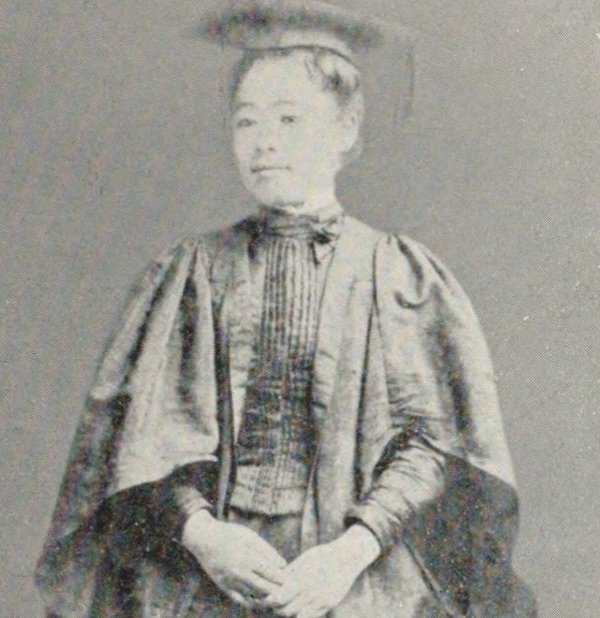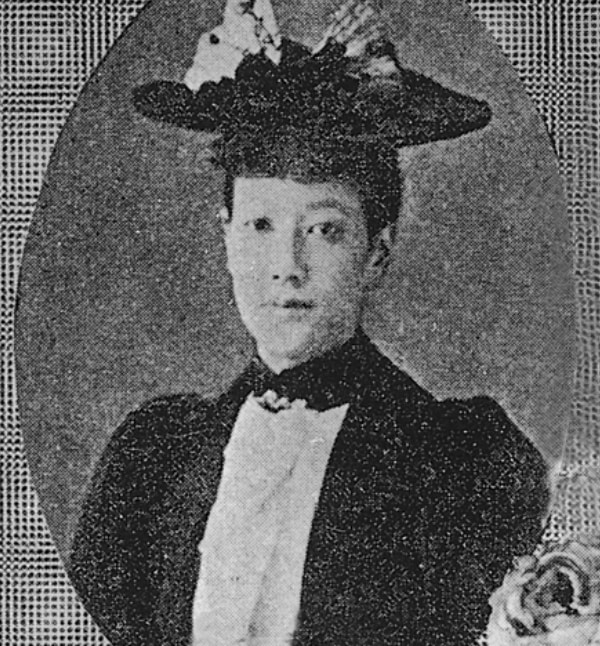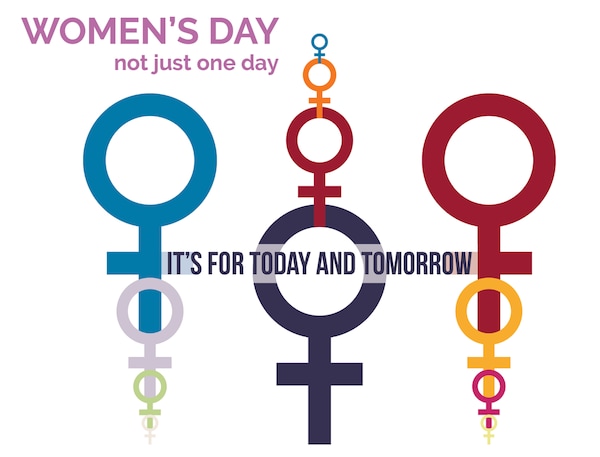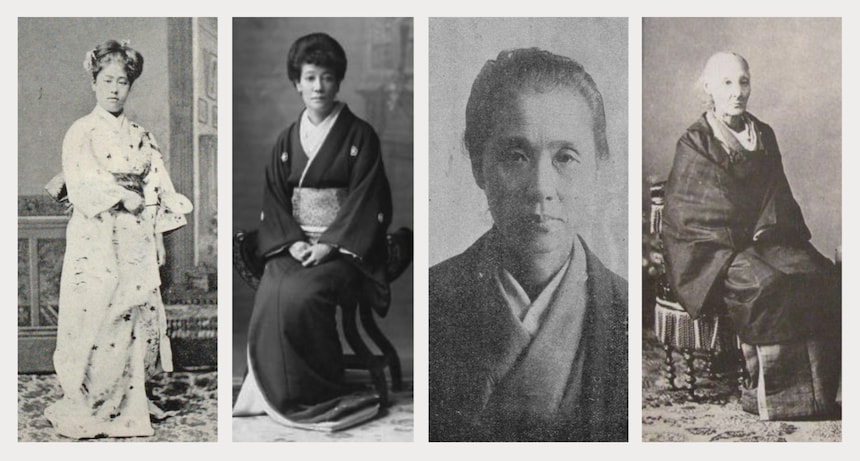Four Japanese Women Who Changed History
Japan has seen many a great woman, from Queen Himiko, the first ruler in recorded history, to astronaut Mukai Chiaki, the first woman to blast into space. In every sphere, women have made their mark. Meet four pioneers whose work in education and medicine changed Japan and the lives of the generations of women who followed.
Education
In the early years of the Meiji era (1868–1912), as Japan rushed to catch up with Western countries, it sent a diplomatic mission of government officials and students to the United States and Europe to study how various countries operated. The Iwakura Mission, which left Japan in December 1871, aimed to revise unequal treaties with Western countries by way of modernization. Education was a major focus of the mission, and several women who sailed with it as children went on to become leaders in women’s education.

Source: Portraits of Modern Japanese Historical Figures (https://www.ndl.go.jp/portrait/e/datas/292/)
Tsuda Umeko (1864–1929)
People in Japan will soon become very familiar with the face of Tsuda Umeko. The pioneer of higher education for women will, from 2024, be featured on the 5,000 yen note. It isn't just Tsuda’s work as an adult that sets her apart; she accomplished incredible things before she hit double-digits. At the age of 6, Tsuda was one of five young women sent to receive an education in the United States as part of the Iwakura Mission.
Returning to Japan after 11 years, Tsuda was alarmed by the treatment of women in her home country and determined to improve the lot of her countrywomen. In 1900, after several years of teaching and an additional three years spent studying in the United States, she founded Joshi Eigaku Juku, one of the first private institutions offering higher education to women. Joshi Eigaku Juku, unique in its day for providing women with an education beyond that deemed necessary to mold them into good wives and mothers, is now known as Tsuda University and remains a prestigious higher education institution for women.
Tsuda is also remembered for establishing a scholarship for Japanese women to attend higher education in the United States, something she accomplished through her writing, speeches, and connections in America.

Source: Portraits of Modern Japanese Historical Figures (https://www.ndl.go.jp/portrait/e/datas/246/)
Oyama Sutematsu (1860–1919; née Yamakawa Sakiko)
While on the subject of Tsuda and Joshi Eigaku Juku, it would be remiss not to mention Oyama, another of the children sent to the United States on the Iwakura Mission, who also devoted her life to women’s education. She was 11 years old when she set sail for the United States. She became the first Japanese woman to receive an American college degree (from Vassar College) and supported Tsuda in the founding and administration of Joshi Eigaku Juku among other education-related endeavors.
Medicine
The news in 2018 that 10 university medical schools, including the prestigious Tokyo Medical University, had altered female applicants’ results to keep their entry to a minimum would no doubt come as a great disappointment—but probably not a shock—to Japan’s first women doctors. After all, they also faced hurdles and unfair treatment in their quests to become physicians.

Source: Portraits of Modern Japanese Historical Figures (https://www.ndl.go.jp/portrait/e/datas/43/)
Ogino Ginko (1851–1913)
Japan’s first licensed female doctor of Western medicine was a woman motivated by painful personal experience. She underwent humiliating treatment at the hands of male physicians for an STD, believed to be gonorrhea, passed on from her new husband.
After divorcing her husband and returning to her family home, Ogino was admitted to hospital, where she spoke with fellow female patients about their experiences. These conversations galvanized her, and she resolved to become a doctor so that other women would not have to suffer the same degrading treatment.
It proved a challenge, but eventually, Ogino managed to enroll in a private medical school, graduating in 1882. Her difficulties didn’t end there, however. Graduates of private universities—the only choice for women at the time—were required to take a licensing examination. Ogino applied several times and was rejected on the grounds that she was a woman.
Ogino refused to give up, and with the help of prominent supporters took her fight to the head of the Hygiene Bureau at the Ministry of Home Affairs. Finally, in 1884, women received the right to sit the licensing exam. Ogino passed in 1885, becoming Japan’s first licensed female physician of Western medicine and opening the door for countless women to follow her into the profession.

Source: http://bakumatsu.org/men/view/229 via Wikimedia Commons (public domain)
Kusumoto Ine (1827–1903)
While Ogino is the first licensed female physician of Western medicine, she was not the first Japanese woman trained in Western medicine. That title goes to Kusumoto Ine. The daughter of a German physician stationed in Dejima, Nagasaki, and a Japanese mother, Kusumoto reached the peak of her career before the licensing system was put in place and thus never sat the exam.
Kusumoto’s story, however, is another one of surmounting difficulties. Not only did she overcome obstacles in place because of her gender, she also battled prejudice due to her mixed parentage. She even survived a #metoo moment that saw her impregnated by a mentor.
Over the course of her incredible career, she not only operated her own clinic but eventually was called upon to treat several members of the imperial family, even assisting in the birth of the Meiji Emperor’s first child (who was sadly stillborn). Though Kusumoto may not have founded any schools or pushed for policy changes, the simple fact that she was able to carve out a space for herself and find such success is worthy of celebration.

Source: LJNovaScotia (Pixabay)
The world honors its women on International Women’s Day (March 8). Some countries go further, dedicating an entire month to raising the profile of influential women from history with Women’s History Month, and expanding this throughout the year is surely called for. Japan is known for its less than admirable record regarding women's rights, ranking 120th out of 156 countries covered by the global gender gap index in 2021. But there are many inspiring stories of influential Japanese women to discover, even if they are often left out of history textbooks. Consider these brief introductions but a starting point.
Main image: Tsuda Umeko (Source: Portraits of Modern Japanese Historical Figures, https://www.ndl.go.jp/portrait/e/datas/292/), Oyama Sutematsu (Source: Wikimedia Commons, public domain), Ogino Ginko (Source: Portraits of Modern Japanese Historical Figures, https://www.ndl.go.jp/portrait/e/datas/43/), Kusumoto Ine (Source: https://bakumatsu.org via Wikimedia Commons, public domain)




